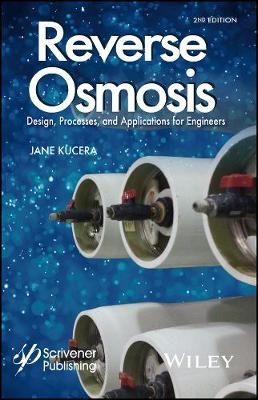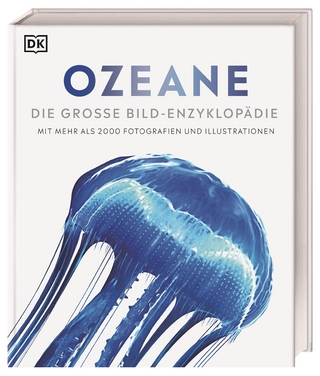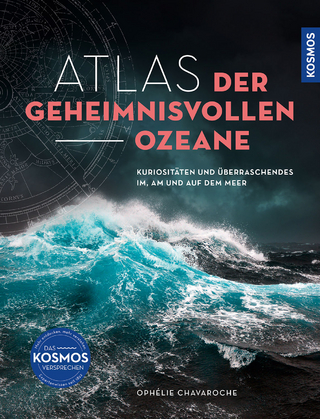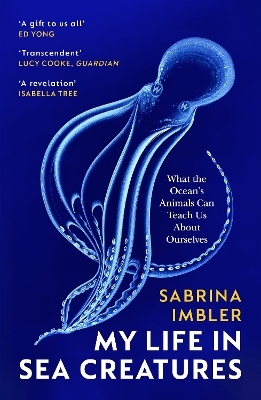
Reverse Osmosis
Wiley-Scrivener (Verlag)
978-1-118-63974-0 (ISBN)
The second edition is an enhanced version of the original best seller. Each chapter has been reviewed and updated. Revised features include more detail on various pretreatment techniques such as greensand and pyrolusite pretreatment media. The design projection chapter has been edited to include up-to-date information on current projection programs. A new section on microbial fouling control featuring chlorine and alternative techniques is included to address the needs of most RO systems. Also, a discussion on forward osmosis is added as an alternative and/or companion technology to reverse osmosis for water treatment. The second edition includes all updated, basic, in-depth information for design, operation, and optimization of reverse osmosis systems.
Earlier chapters cover the basic principles, the history of reverse osmosis, basic terms and definitions, and essential equipment. The book then goes into pretreatment processes and system design, then, finally, operations and troubleshooting. The author includes a section on the impact of other membrane technologies and even includes a "Frequently Asked Questions" chapter.
Jane Kucera is a chemical engineer with 25 years' experience in the area of membrane technology. Jane began her work with membranes in the Seawater Laboratory at UCLA where she received her Master of Chemical Engineering degree in 1984. She worked for 7 years with Bend Research, where she worked on water re-use systems for the International Space Station.? Ms. Kucera's subsequent career path is a "who's who" of the world's most respected companies working in water treatment, including GE and Siemens. She joined the Nalco Company in 2003, where she is a senior engineer with a variety of responsibilities. She has approximately 40 publications to her credit, including journal articles, presentations, and book chapters.
Preface xv
Acknowledgements for the First Edition xvii
Acknowledgements for the Second Edition xix
Part 1: Fundamentals
1 Introduction and History of Development 3
1.1 Introduction 3
References 16
2 Reverse Osmosis Principles 19
2.1 Osmosis 19
2.2 Reverse Osmosis 21
2.3 Dead-End Filtration 22
2.4 Cross-Flow Filtration 23
3 Basic Terms and Definitions 25
3.1 Reverse Osmosis System Flow Rating 25
3.2 Recovery 26
3.3 Rejection 28
3.4 Flux 31
3.5 Concentration Polarization 33
3.6 Beta 34
3.7 Fouling 35
3.8 Scaling 38
3.9 Silt Density Index 40
3.10 Modified Fouling Index 43
3.11 Langelier Saturation Index 46
References 47
4 Membranes 49
4.1 Transport Models 50
4.2 Membrane Materials 54
4.3 Membrane Modules 65
4.4 Commercially-Available Membranes 83
References 91
5 Basic Flow Patterns 95
5.1 Arrays 95
5.2 Recycle 100
5.3 Double Pass 101
5.4 Multiple Trains 103
6 Reverse Osmosis Skids 105
6.1 Cartridge Filters 106
6.2 Reverse Osmosis Feed Pumps 109
6.3 Pressure Vessels 116
6.4 Manifolding—Materials of Construction 123
6.5 Instrumentation 124
6.6 Controls 125
6.7 Data Acquisition and Management 127
6.8 Reverse Osmosis Skid 129
6.9 Auxiliary Equipment 129
6.10 Other Design Considerations 130
References 131
Part 2: Pretreatment
7 Water Quality Guidelines 135
7.1 Suspended Solids 135
7.2 Microbes 137
7.3 Organics 139
7.4 Color 139
7.5 Metals 140
7.6 Hydrogen Sulfide 141
7.7 Silica 145
7.8 Calcium Carbonate 150
7.9 Trace Metals—Barium and Strontium 151
7.10 Chlorine 152
7.11 Calcium 153
7.12 Exposure to Other Chemicals 155
References 155
8 Techniques and Technologies 157
8.1 Mechanical Pretreatment 159
8.2 Chemical Pretreatment 187
8.3 Combination Mechanical Plus Chemical Pretreatment—Lime Softening 201
8.4 Sequencing of Pretreatment Technologies 204
8.5 Membrane Biofouling and Alternative Disinfectants 206
References 230
Part 3: System Design
9 Design Considerations 237
9.1 Feed Water Quality 238
9.2 Temperature 242
9.3 Pressure 244
9.4 Feed Water Flow 245
9.5 Concentrate Flow 246
9.6 Beta 246
9.7 Recovery 249
9.8 pH 251
9.9 Flux 253
References 253
10 RO Design and Design Software 255
10.1 Dow WAVE – Water Application Value Engine 258
10.2 Toray DS2 275
10.3 Hydranautics IMS Design 281
References 282
Part 4: Operations
11 On-Line Operations 285
11.1 Reverse Osmosis Performance Monitoring 285
11.2 Data Collection 286
11.3 Data Analysis and Normalization 287
11.4 Preventive Maintenance 301
References 303
12 Performance Degradation 305
12.1 Normalized Permeate Flow 305
12.2 Normalized Salt Rejection 308
12.3 Pressure Drop 310
References 311
13 Off -Line Operations 313
13.1 System Flush 313
13.2 Membrane Cleaning 316
13.3 Membrane Lay-Up 326
References 328
Part 5: Troubleshooting
14 Troubleshooting 331
14.1 Mechanical Evaluation 333
14.2 General Performance Issues 334
14.3 System Design and Performance Projections 334
14.4 Data Assessment 336
14.5 Water Sampling 339
14.6 Membrane Integrity Testing 339
14.7 Profiling and Probing 340
14.8 Membrane Autopsy 342
References 352
Part 6: System Engineering
15 Issues Concerning System Engineering 355
15.1 Sodium Water Softening 355
15.2 Reverse Osmosis Sizing and Capacity 364
15.3 Membrane Cleaning: On-Site versus Off -Site 365
15.4 Reverse Osmosis Reject Disposal Options 367
References 371
16 Impact of Other Membrane Technologies 373
16.1 Microfiltration and Ultrafiltration 373
16.2 Nanofiltration 388
16.3 Forward Osmosis 392
16.4 Continuous Electrodeionization 398
16.5 HERO™ Process 408
References 413
Part 7: Frequently Asked Questions
17 Frequently Asked Questions 419
17.1 General 419
17.2 Operational 421
17.3 Equipment 433
References 435
Index 437
| Sprache | englisch |
|---|---|
| Maße | 161 x 241 mm |
| Gewicht | 794 g |
| Themenwelt | Naturwissenschaften ► Chemie |
| Naturwissenschaften ► Geowissenschaften ► Hydrologie / Ozeanografie | |
| Technik ► Umwelttechnik / Biotechnologie | |
| ISBN-10 | 1-118-63974-X / 111863974X |
| ISBN-13 | 978-1-118-63974-0 / 9781118639740 |
| Zustand | Neuware |
| Haben Sie eine Frage zum Produkt? |
aus dem Bereich



